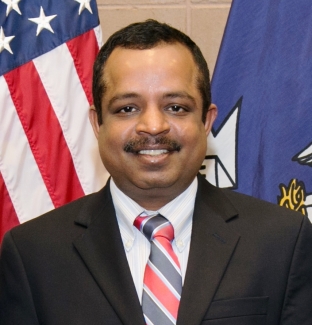My association with the Developmental Testbed Center (DTC) dates back to early 2008 when the NCEP operational Hurricane Weather Research and Forecast (HWRF) modeling system developed at Environmental Modeling Center (EMC) was adopted to create a community modeling framework for hurricane model development supported by the Hurricane Forecast Improvement Project (HFIP). I enjoyed working with DTC in various capacities as the Hurricane Team Leader at EMC and the Development Manager of HFIP.
Operational hurricane model development undoubtedly has been one of the most successful initiatives by HFIP project that enabled a process for effective transition of research to operations (R2O), and the outcome is clearly evident in terms of tangible improvements in hurricane track and intensity forecast guidance from operational HWRF as demonstrated in real-time in the past few years. HWRF model has evolved as a unique high-resolution atmosphere-ocean-wave coupled system for all global tropical cyclones, serving various operational forecast agencies, researchers and private industry. HWRF is the only operational hurricane model in the world freely distributed and supported to the research community through extensive documentation, in-person and online tutorials, and user guides.
While HWRF’s development is centralized at EMC, it incorporates contributions from a variety of scientists spread out over several governmental laboratories and academic institutions. This distributed development scenario poses significant challenges: a large number of scientists need to learn how to use the model, operational and research codes need to stay synchronized to avoid divergence, and promising new capabilities need to be tested for operational consideration. DTC’s contributions for HWRF are pivotal in the areas of code management, advanced support for model developers and general users, and extensive testing and evaluation of new innovations.
My recent transition as Chief of the Global Climate and Weather Modeling Branch (GCWMB) at EMC coincided with two other major initiatives – the National Weather Service (NWS) Next Generation Global Prediction System (NGGPS) project, and the expansion of DTC’s role into global modeling through creation of the Global Modeling Test Bed (GMTB). Operational global modeling at NOAA/NCEP is the most significant attribute for the entire US weather enterprise. The NCEP Global Forecast System (GFS) stands as a back bone for the whole operational production suite. GCWMB at NCEP/EMC is responsible for developing, implementing and advancing the global modeling system that spans from weather to climate scales. With support from the NGGPS project, a new non-hydrostatic dynamic core is being selected for replacing the current spectral model for serving the future needs of the NWS. A community based NOAA Environmental Modeling System (NEMS) architecture will enable seamless development and integration of atmosphere, ocean, land, sea-ice, waves, and aerosols for weather, sub-seasonal and seasonal forecast capabilities. Similar to the HFIP project, the emphasis of NGGPS is to foster enhanced R2O capabilities for accelerated model development and transition to operations. GMTB has embarked on designing a Common Community Physics Package (CCPP) within NEMS that allows for systematic evaluation of advanced physics.
There is enormous talent in the US NWP community that has largely been untapped. With a focused approach, we can bring together the best in the field by adopting the community modeling concept. I am looking forward to continue working with DTC to strengthen the relationship between operational and research communities, and to realize the goals of NGGPS in becoming second to none in global weather prediction.
